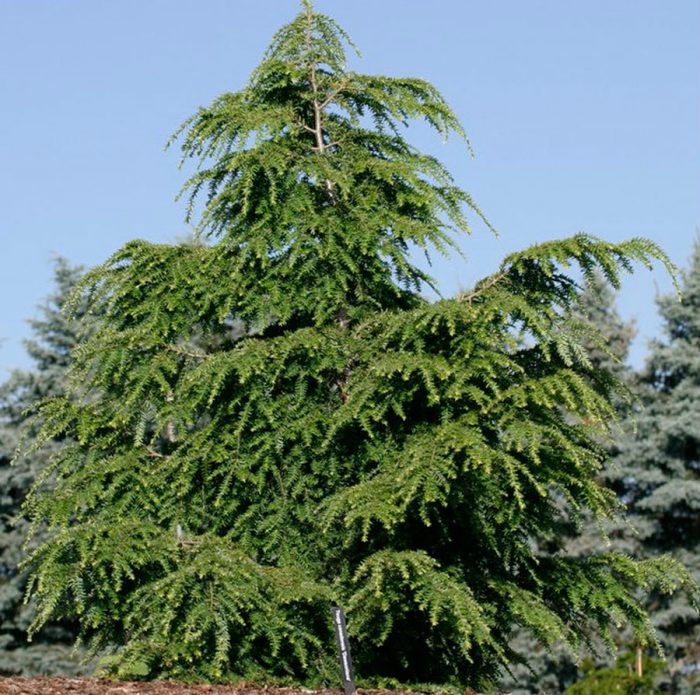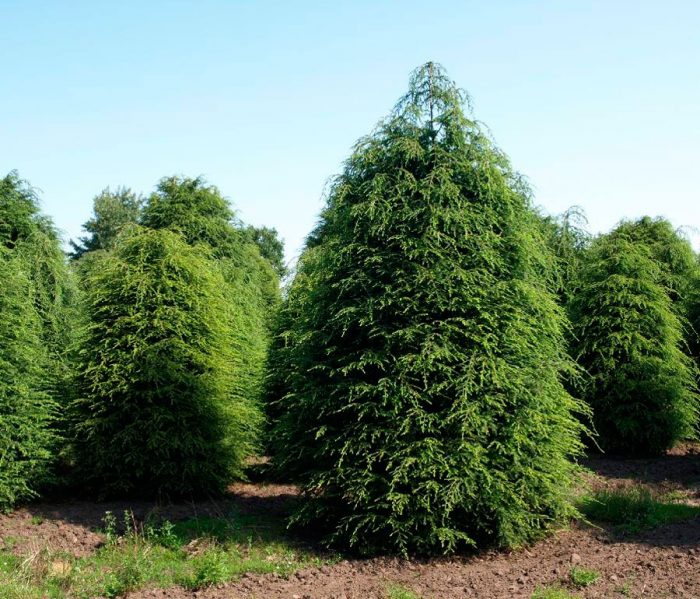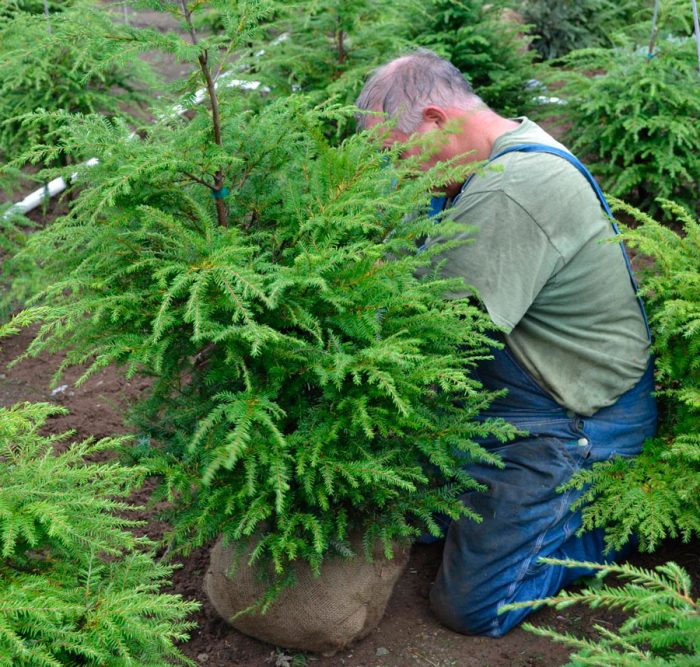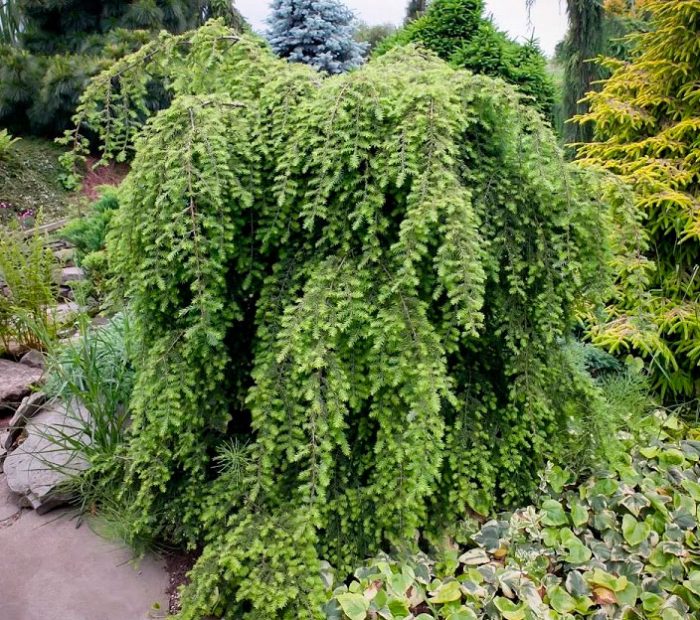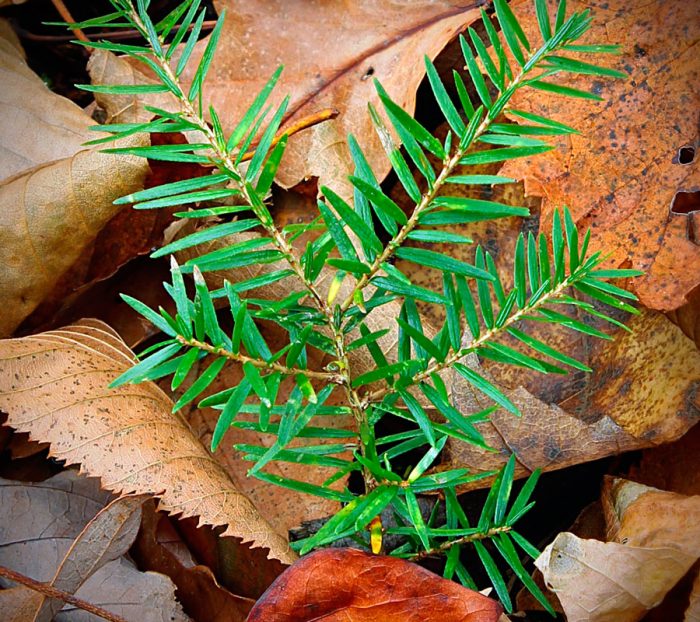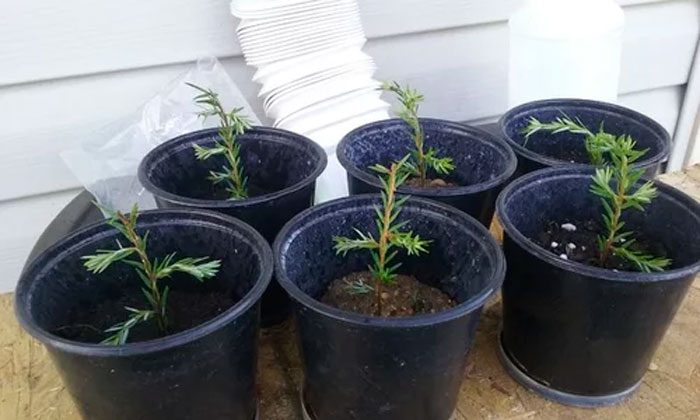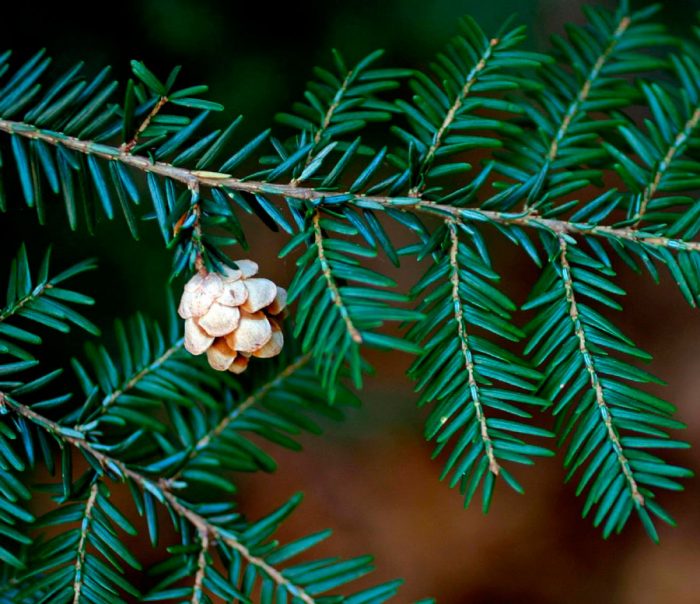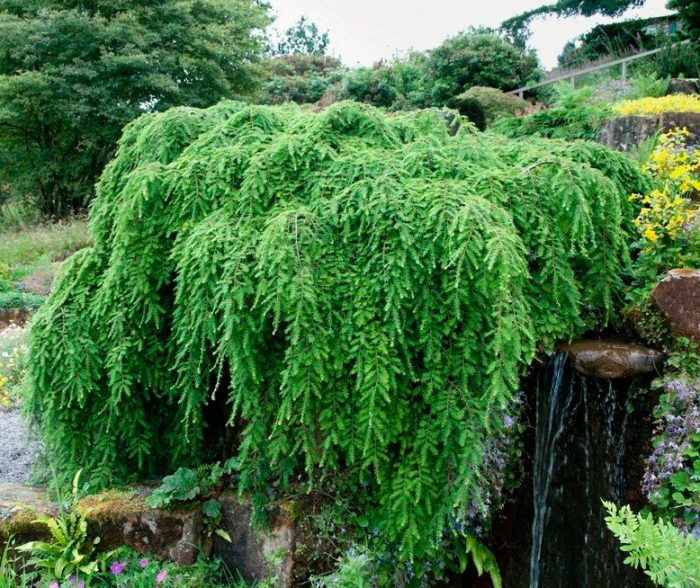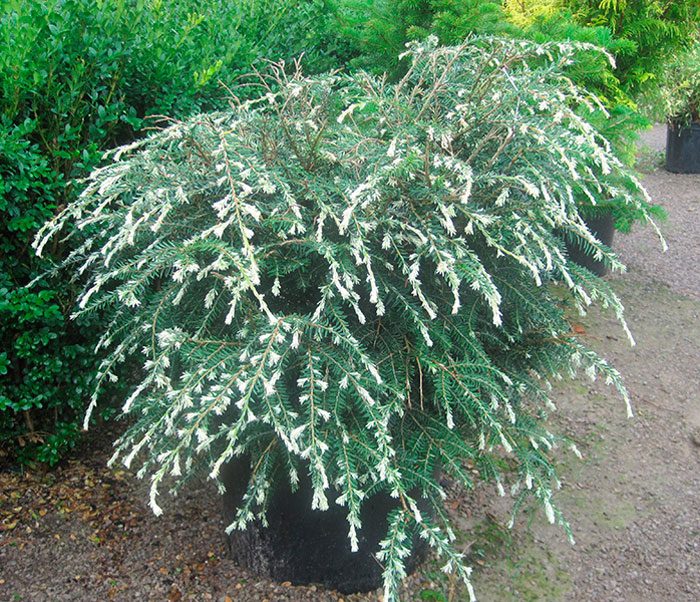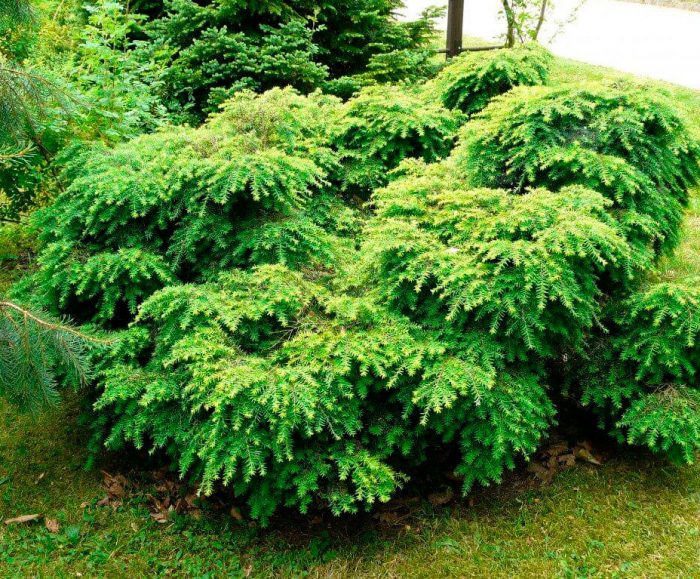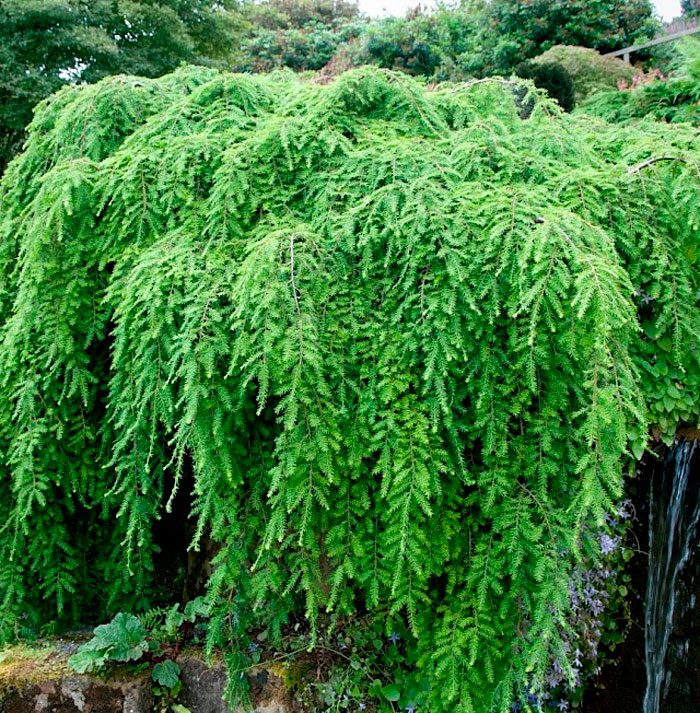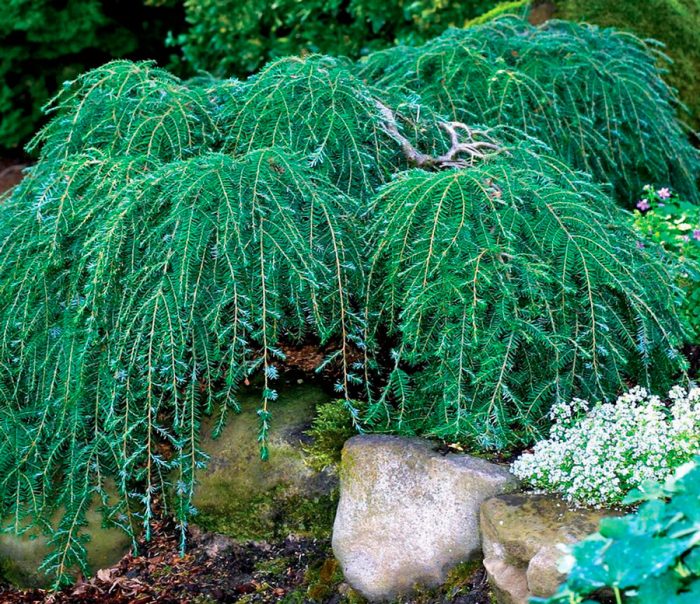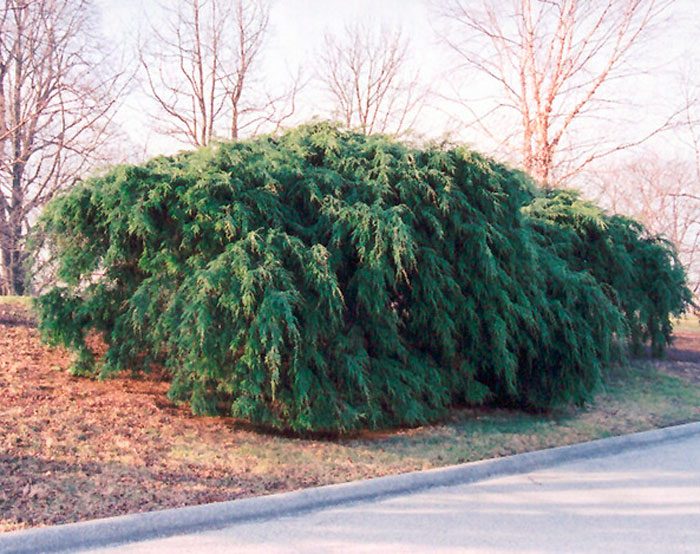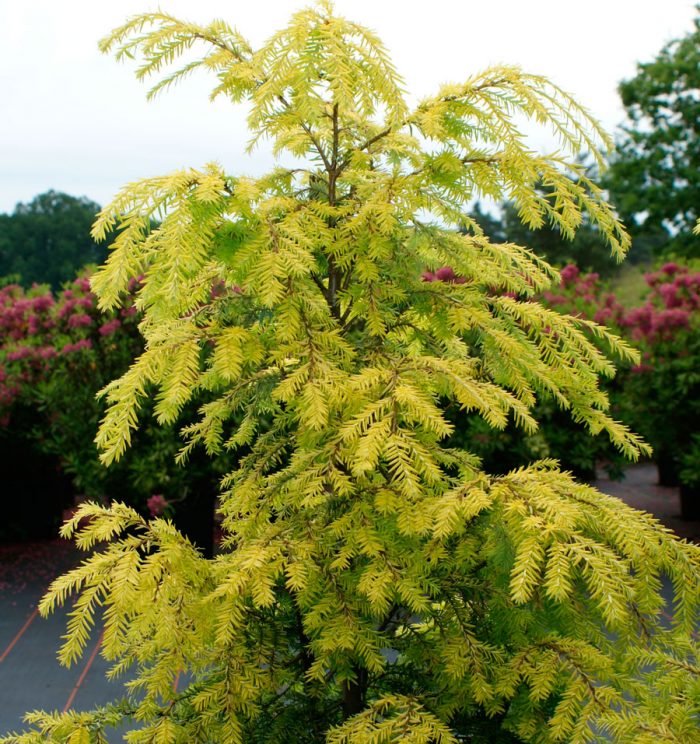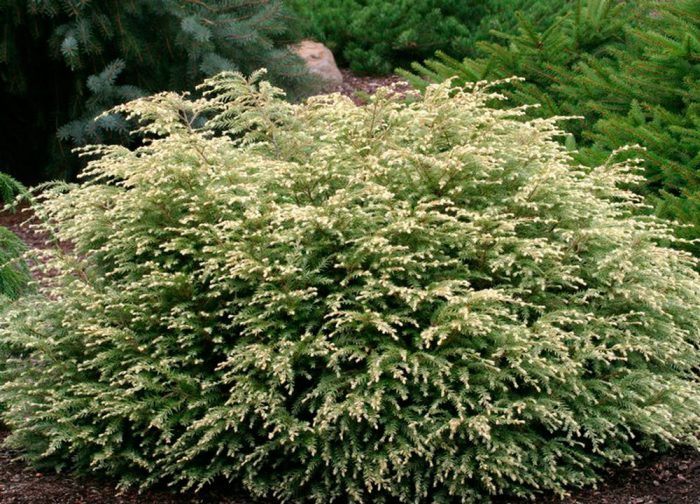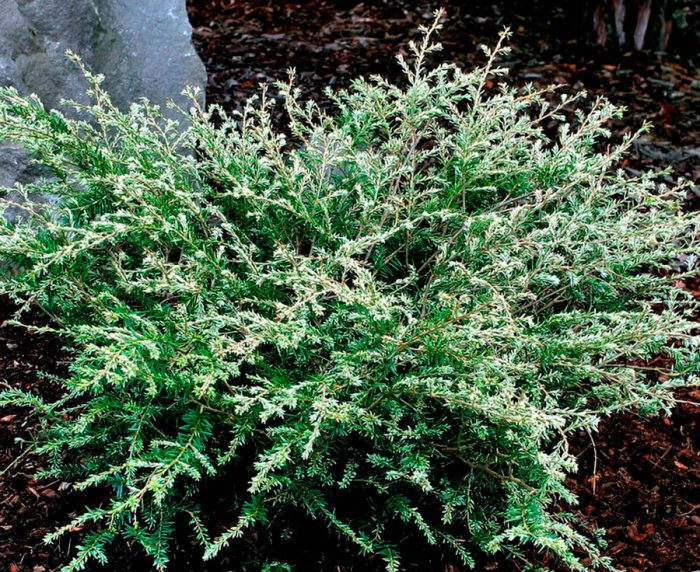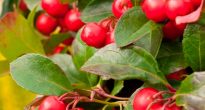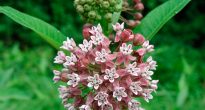The hemlock plant began to be cultivated in the 18th century. This genus unites about 20 species, which are represented by trees. A characteristic feature of the hemlock is that even trees belonging to the same species can differ not only in height, but also in the shape of the crown.
The average height of this plant varies from 28 to 30 meters. However, there are specimens that can reach a height of about 75 meters. In nature, hemlock can be found in East Asia and North America. In European countries, this tree is very often used in park landscaping.
Among all species, the Canadian hemlock (Tsuga canadensis) is the most widespread in culture. The homeland of this species is considered to be the eastern part of Canada and North America. Such a tree grows and develops well in mid-latitude conditions. The fact is that its varieties are distinguished by very high resistance to frost.
Content
Features of Canadian hemlock
The Canadian hemlock in natural conditions can reach a height of more than 20 m and a width of up to 8 m. Its loose, spectacular crown has a conical shape. Often, such a plant forms multi-stage forms. Its shoots are graceful and thin. The tops of the lateral and apical shoots are hanging down. The branches located at the bottom of the Canadian hemlock are so powerful and thick that it may seem like a multi-stemmed tree.
On the branches, spindle-shaped cones are formed, which reach about 25 mm in length. During the first year, cones ripen, and they fly around only in the second year of their growth. Flattened leaf plates can be colored in various shades from greenish yellow to glossy green. On the seamy surface of the foliage there are 2 stripes of white color, which include several stomatal lines.
This culture is unpretentious and undemanding in care. It should be planted and grown in almost the same way as other conifers. This species has a large number of decorative varieties that differ in crown shape, growth type, leaf color and height.
Planting hemlock in open ground
Seat selection
Hemlock canadian extremely poorly takes root after transplantation.That is why experienced gardeners are advised to immediately choose the most suitable site for it, so as not to transfer the bush to another place later.
This coniferous crop grows best in a soil saturated with organic matter, which passes water well, but is evenly moist. Its pH level can be neutral or acidic. A suitable place should have reliable protection from the scorching rays of the midday sun and powerful gusts of wind. However, if the hemlock grows in a region with a cool climate, then it is not harmed by direct sunlight during the day.
Landing features
The planting hole should be so deep that the roots of the seedling, taken together with a clod of earth, can freely fit into it. When planting the plant, make sure that the root collar rises slightly above the ground level.
When digging a hole, the topsoil must be folded back separately. This soil is mixed with a small amount of compost, peat and sand to increase its drainage. At the bottom of the prepared pit with a layer of 15 cm, expanded clay or coarse sand should be laid.
The planted seedlings need to be watered with plenty of water. In order to prevent excessive evaporation of moisture, the surface of the soil near the bush must be covered with a layer of mulch (finely broken bark or peat). This will also help keep the root system from overheating.
It is not specifically necessary to apply any fertilizers to the tree trunk circle, since the tree has enough nutrients that it receives from the mulching layer and its flown needles.
Canadian hemlock care
Watering
The Canadian hemlock reacts very poorly to drought, so it must be watered systematically during a long dry period. Particular attention should be paid to watering a young plant. If the bush lacks moisture, then this can cause stress: the needles turn yellow, and the branches droop.
Until the bush grows up and gains strength, it is watered at least 1 time in 7 days during the dry period. At the same time, it is recommended to sprinkle it with a hose at least once every 30 days in the hot summer months. It is recommended to loosen the surface of the soil in the near-trunk circle only if it has become very dense. In this case, the soil should be loosened at a depth of no more than 10 centimeters.
Wintering
The adult hemlock is characterized by a fairly high frost resistance. However, in seedlings, the tops of young stems may freeze slightly in winter. In order to avoid this, young bushes are covered with agrofibre or spruce branches in late autumn. It is also recommended to cover the surface of the trunk circle with a layer of mulch (spruce branches or compost), which will provide reliable protection of the root system from excessive evaporation and severe frosts in the event that the winter is not snowy.
Fertilizer
Top dressing of hemlock is carried out only if necessary. It is carried out in the spring before the young shoots appear. To do this, use a mineral complex fertilizer for conifers.
Reproduction methods
Growing from seeds
You can buy seed material of Canadian hemlock in the nursery. Also, if you wish, you can assemble it with your own hands. To do this, in the autumn, pluck the cones from an adult plant and put them in a well-lit or warm place, where they should open after a while. Seeds should be stratified before sowing. To do this, they are removed on the refrigerator shelf for 2–2.5 months.
Sowing the prepared seed material is carried out in a moist soil mixture consisting of one part of peat and the same amount of universal soil. They need to be buried into the substrate to a depth of 0.3 to 0.4 cm. Move the crops to a well-lit place (the light should be diffused) and make sure that the soil mixture in the container is always slightly damp.
Planting seedlings grown from seeds in open ground is carried out in August. This procedure can be postponed until next spring. The planted plants are systematically watered for the first three years and do not forget to cover them for the winter.
Cuttings
Cuttings are harvested in the last weeks of the summer period. For this, shoots of the current year are used, which should be semi-lignified. The bark should be green at the top and brown at the cut. In order for the cuttings to take root quickly, all needles are removed from their lower part and treated with a plant growth stimulating powder that is suitable for trees and woody shrubs.
Examine the cut of the cutting; it must be covered with a layer of powder. After that, it can be planted in a container filled with soil mixture. Take a suitable sized pot and make a good drainage layer on the bottom. Then fill it with a substrate consisting of soil and sand (or perlite). Water the planted stalk liberally and place it with the pot in a transparent bag. Watering the segment is carried out as the top layer of the soil mixture dries out. The planting of rooted cuttings to a permanent place is carried out in the last spring weeks.
Diseases and pests
Diseases
Most often, Canadian hemlock is affected by fungal diseases. This can happen due to high air humidity with poor ventilation, and also due to stagnation of liquid in the roots of the plant. In the affected tree, the leaves turn yellow and die off, and the tops of the young shoots dry out at the same time. Hemlock is also susceptible to rust damage. Because of it, a rusty growth is formed on the surface of the needles and cones, in which the spores of the fungus are located.
To save diseased specimens, they need to be sprayed several times with a solution of a fungicidal preparation. If possible, cut off all affected parts and destroy them.
Pests
The following pests can settle on the hemlock: aphids, caterpillars, spider mites and scale insects.


Watch this video on YouTube
Canadian hemlock in landscape design
The Canadian hemlock is a shade-loving crop, so it can be grown in the shade. It will look great next to other shade-loving plants, for example, it can be planted near rogers, ferns, host, haulteria, etc.
Since the plant has a spectacular openwork crown and drooping branches that touch the soil surface, it can be grown both as a salt crop and together with spectacular flowering plants.
Ground cover dwarf varieties are suitable for growing on alpine slides or rockeries. Since the tree loves high humidity, it can be planted near an artificial reservoir. Please note, however, that wetlands are not suitable for growing.
Since it is a slow-growing crop, it will perfectly fit into any garden. The fact is that the hemlock does not need to be cut regularly, and it ages very slowly.
Canadian hemlock varieties with photo
Albospica
They began to cultivate this variety in 1866. The stunted tree is decorated with long dark green needles with snow-white tips. Experts recommend using it to decorate shaded areas in the garden.
Jeddeloh
The shape of the crown of the shrub is hemispherical, and it is characterized by slow growth. The plant reaches a height of only about 50 cm, while it is one of the shortest varieties of Canadian hemlock. Due to the fact that the stems grow radially, a characteristic depression forms in the middle of the shrub. Soft needles are colored dark green.
Pendula
This beautiful tree has weeping stems hanging so low that they reach the surface of the soil.
Cole's Prostrate
This spectacular ground cover shrub grows short, its cascading lush branches form a cushion-shaped crown.New needles, grown in spring, have a light green color, while mature leaves are painted in a dark green hue.
Sargentii
A large tree grows a large number of drooping stems. Its height is about 3 meters, and in diameter it reaches 6 meters.
Wintergold
This rare variety has a golden hue with a graceful pyramidal crown. The tree grows to a height of about 200 cm. Around October, the needles turn golden and remain so until mid-spring (until April). In order for the color of the needles to be saturated, the tree should be planted in a well-lit area.
Moon frost
The variety is represented by a compact dwarf tree. Its characteristic feature is the snow-white tips of new shoots that appeared in spring. However, in the summertime, all the needles turn green.
Gentsch white
This dwarf variegated shrub can reach a height of about 100 cm. Its crown shape is cushion-like. The tops of graceful thin shoots are white-cream. In the autumn-winter period, their shade becomes more saturated, due to which the contrast between mature dark green needles is enhanced. To maintain a high decorative effect of the shrub, experts advise cutting it off every year. Thanks to this, young shoots will grow more intensively.
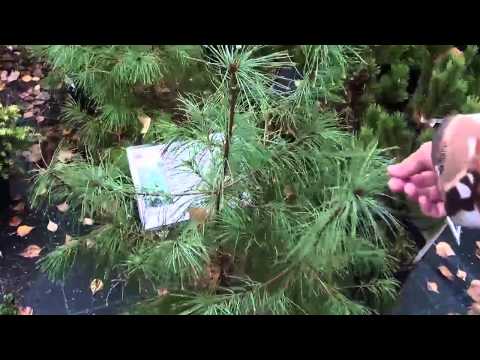

Watch this video on YouTube

